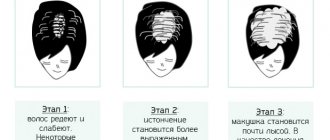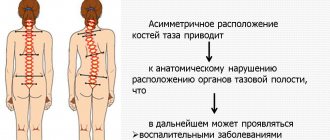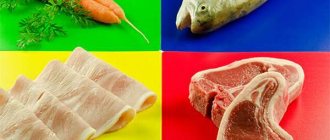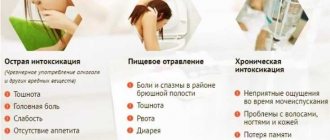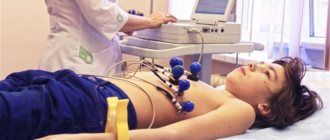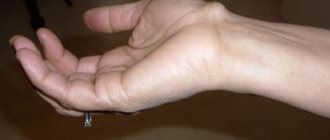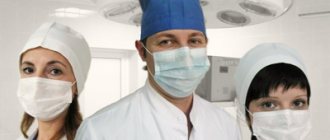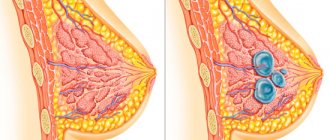- What is alopecia and how common is it in children?
- Types of childhood alopecia
- Why might this occur?
- How does it manifest in children?
- Which doctor should you contact?
- Examinations and tests
- Basics of Effective Treatment
- What not to do
- Preventive actions
What is alopecia and how common is it in children?
Alopecia in children is a process of thinning or significant hair loss and a disruption of the growth mechanism of the next scalp. Unfortunately, these phenomena and even a bald spot on a child’s head are far from isolated cases.
They do not occur, of course, as often as in adults, but they are a fairly pressing problem in pediatrics and pediatric dermatology.
The disease is characterized by focal areas without hair of varying sizes appearing on the scalp, as well as the presence of thin and brittle hairs in the area of baldness. Alopecia in children is a chronic dermatosis that also manifests itself on the eyelashes and eyebrows.
Did you know? There are many known historical figures who had bald heads. The French king Louis XIV used about a thousand different types of wigs to disguise her, which provoked a fashion for wearing wigs in France.
Causes and stages of childhood hair loss
Statistics indicate that every thousandth person on the planet suffers from total baldness. Let's look at the reasons for such terrifying numbers for this disease.
- Hereditary predisposition to the disease;
- Congenital underdevelopment of follicles. With this disease, even in the first year of a child’s life, hair grows very poorly and falls out quickly. In this case, they say that this is total alopecia in children;
- Disruptions in the hormonal system caused by pathology of the thyroid gland, ovaries, pregnancy, menopause;
- Autoimmune diseases (scleroderma, lupus erythematosus). In case of disturbances in the immune system, immune cells attack hair follicles, considering them foreign agents, causing self-destruction of the latter;
- Neuropsychic disorders and severe emotional experiences that cause inhibition of microcirculation around the hair follicles;
- Limiting protein and microelements in the diet. With strict diets or diseases of the gastrointestinal system, leading to a failure in the absorption of beneficial micronutrients, the nutrition of the hair shaft is disrupted;
- Radiation and toxic effects on the body;
- Severe infectious diseases (tuberculosis, syphilis);
- Use of anticancer drugs.
In infancy, alopecia areata is completely harmless and goes away on its own without treatment. But if symptoms of patchy hair loss in children appear after three years of age, this may indicate a serious illness.
Let's look at the causes of alopecia areata in a child. They may be:
- heredity;
the development of an infectious disease - in particular, pneumonia, influenza, chicken pox, etc.;- abrasions, burns or other types of injuries in the scalp;
- weakening of the immune system;
- helminthiasis;
- fungal infections;
- severe stress and prolonged depression;
- trichotillomania is a pathology in which the patient, under the influence of stress, pulls out his hair;
- diabetes mellitus, hypothyroidism and other diseases associated with disruption of the endocrine system;
- avitaminosis.
One of the most common explanations for why a child has hair loss is that he or she has cancer.
It must be emphasized that although a cancerous tumor is the root of the problem, often the cause of childhood baldness is precisely the medications that are aimed at treating oncology.
Alopecia in children, the causes of which can only be diagnosed by an experienced specialist, often has a telogen effluent nature. As a rule, this type of baldness most often occurs in a child who has undergone surgery the day before and has experienced emotional stress as a result of it. As a result, he began to lose weight and had frequent fevers.
In babies suffering from telogen effluvium, hair loss usually occurs continuously over several months. However, six months after the peak stage of the disease, hair in the bald areas begins to grow again.
Trichologists explain this by saying that the stress factor enters a stage of rest: it is replaced by an active growth factor.
The main causes of hair loss are as follows:
- the child has cancer or is a consequence of chemotherapy received to treat cancer;
- imbalance of microelements in the body - lack of zinc, copper, iron;
- impaired immunity;
- ringworm;
- blood diseases;
- hormonal changes in the body are a common cause of the development of the disease in adolescents;
- consequences of severe stress, serious illnesses or acute infections;
- abnormality of hair shafts.
Infantile alopecia can occur even in infants and toddlers. In this case, the causes of the development of the disease are rickets, constant rubbing of the head on the pillow or impact on the hair (the baby pulls, pulls the hair, wraps it around his finger).
Types of childhood alopecia
Alopecia is a multi-species disease, its varieties are directly related to the causes :
- physiological - typical for infants, because the baby rubs his head while lying down at a very early age;
- congenital - is a consequence of congenital pathologies (epidermolysis, folded skin and others);
- hereditary - in which parents or close relatives have the same disease;
- anagen, which occurs in cancer patients;
- telogen appears when suffering from illnesses with a very high temperature, surgical interventions, or significant weight loss;
- traction, which is caused by damage to the hair follicles due to the use of hairstyles with strong pulling;
- focal (area) alopecia in children is the result of problems with the immune system;
- atrophying - Broca's pseudopelade (etiology is not fully known);
- seborrheic - its development occurs during seborrhea (puberty);
- universal - this is baldness of the entire skin.
Did you know? The main causative factor for baldness, like many diseases, is stress.
Junk food also affects baldness.
What is alopecia
Alopecia is the name given to common baldness, but it’s not that simple. This disease differs from the usual lack of hair in that it is irreversible - new hair will not grow on its own in place of the lost hair. When we talk about baldness, we automatically think of hair exclusively on the head, but this is wrong - alopecia affects different parts of the body, it’s just that the head is always visible. Baldness can also occur in women, but much less frequently. The reason for this is the production of androgen hormones. If a woman loses her hair with age, it happens much later than a man.
Androgen deficiency can be hereditary, but the effect is always the same, regardless of the cause - hair falls out irrevocably. This happens differently for everyone, hence there is a general classification of alopecia by localization.
Main types of alopecia:
- Diffuse alopecia. Noticeable and uniform hair loss along the entire perimeter of the head. As a result of this diagnosis, 80% of the hair follicles on the head simply stop producing hair, going into a dormant state, but not being destroyed. Diffuse alopecia is caused by severe prolonged stress, hormonal imbalance, regular and long-term use of certain medications (antibiotics, antipsychotics, etc.), surgical operations, certain types of diseases, as well as diets, the main condition of which is a lack of substances necessary for the body.
- Alopecia areata. It is characterized by “foci” of the disease - specific areas of lack of hair. Simply put, hair falls out in patches and right in the middle of a thick head of hair there may be a patch of completely bald skin. It is provoked by a large number of antibiotics, stress, genetics, and occasionally by anesthesia and vaccination.
- Scarring alopecia is selective baldness in a specific area that has been damaged externally or internally. Often occurs as a result of serious injuries to the skin (cuts, burns) or infectious processes in the body.
There are many causes of childhood alopecia.
Do not forget about two more causes of baldness, well known in the world. This is age-related alopecia - an irreversible process associated with the gradual death of hair follicles and sudden hair loss after chemotherapy. The latter, however, is already being successfully combated using various preventive measures before surgery.
Why might this occur?
A common factor contributing to the appearance of alopecia in children is the effect on the follicles of a variety of progressive negative influences. The following causes of the disease are identified:
- congenital pathologies;
- hereditary nature;
- immunity problems;
- chemotherapy procedures for oncology;
- surgical operations;
- lack of chromium, copper, zinc, vitamin B12 and other beneficial nutrients in the body due to significant weight loss;
- damage to hair follicles due to tightly pulled hairstyles;
- intoxication and high temperature;
- instability of the nervous system, disorders of a nervous and psychological nature, which have caused the habit of pulling out hair;
- endocrine system problems, hypothyroidism;
- bad habits of children (twisting or pulling one’s hair, etc.);
- burns and mechanical injuries to the head;
- inflammation processes (otitis media, caries);
- diseases caused by infections (chickenpox, influenza);
- worms;
- use of various medications;
- presence of staphylococcal infection;
- anemia;
- diabetes;
- increased doses of vitamin A;
- malnutrition;
- exposure to x-rays;
- abnormal development of the hair shaft, which causes fragility;
- ringworm, pyoderma, rickets.
If the genetic nature is not identified, in newborns and infants, alopecia mainly appears as evidence of the presence of rickets (if the diagnosis is confirmed, special treatment is prescribed by the doctor) or the fact that children rub their heads against the pillow (the manifestation of alopecia will go away on its own over a period of time).
Toddlers often have the habit of influencing their hair in various mechanical ways (pulling, sorting, twirling on their fingers); there is no need to attach special importance to such habits, but if children do not get rid of them before the age of four, then you will need to visit a child psychologist.
Children over three years old are already in active contact with other children, animals and many adults.
Such communication can provoke infection with fungal diseases, which, in turn, will lead to the appearance of alopecia.
Fungal diseases include lichen, pneumonia, pharyngitis, meningitis, thrush, obstructive bronchitis, serous meningitis, stomatitis.
At six or seven years old, children may well develop a mental reaction to stress in the form of hair pulling.
The hair follicle can react to almost any negative impact on the body in the form of alopecia (often telogen effluvium or alopecia areata in children). To cure the disease, you need to eliminate the provoking factor and then begin to strengthen the hair follicles.
Important! At the age of six or seven years, children begin to undergo serious overload on the immune system and nervous system, sometimes this becomes the causative moment for the occurrence of alopecia.
Teenage children are susceptible to alopecia because their body undergoes intensive hormonal changes.
Causes of alopecia in children
Most often, the development of this disease is caused by hereditary and congenital pathologies, sudden weight loss, surgical interventions, deficiency of folic acid and vitamin B12, general intoxication of the body, trauma to the hair follicles, weak immunity, and stress. Source: E.V. Maslova, O.N. Pozdnyakova Structure and clinical variants of alopecia in the practice of a dermatovenerologist // Journal of Siberian Medical Sciences, 2012, No. 2
Also leading to partial or complete baldness are:
- disruptions in the functioning of the nervous and endocrine systems;
- neurological disorders;
- head injuries;
- bad habits: pulling your hair, twirling it around your finger, etc.;
- skin inflammation in the hair growth area;
- some common infectious diseases;
- taking antibiotics;
- infection with worms;
- diabetes;
- nutritional deficiency;
- Iron-deficiency anemia;
- excess vitamin A in the body;
- exposure to x-rays;
- rickets;
- ringworm;
- and etc.
You can group the causes of this disease by age :
- in infants this may be rickets, increased mobility, as a result of which the child constantly rubs against the pillow;
- at the age of 1-2 years, focal baldness is caused by bad habits. Usually children pull their hair and twirl it around their finger. If behavior does not change before the age of 4, you should consult a psychologist;
- over the age of three, children actively adapt to society, so they often become infected with infections and fungal spores;
- going to first grade causes severe stress, heavy loads negatively affect the immune system, as a result of which alopecia also occurs;
- the next “turning point” period is adolescence, when hormonal levels are rearranged. This also serves as a negative factor.
Which doctor should you contact?
If your baby's hair is thinning or falling out, you need to come to an appointment with your local pediatrician, who will listen to complaints, examine and refer you to a pediatric dermatologist-trichologist for hair microscopy.
In the absence of skin diseases, factors that influence the development of the disease must be identified in the impaired functioning of internal organs, as well as the nervous system.
And all of them are within the competence of many specialized specialists, so in order to establish the true cause and an accurate diagnosis, the pediatrician will refer the patient for examination to such doctors as a pediatric neurologist, psychologist, gastroenterologist, mycologist, endocrinologist.
A consultation and examination with a rheumatologist, otolaryngologist, infectious disease specialist, hematologist, and dentist would not hurt. Diagnosis of the disease requires the joint efforts of different medical specialists.
Did you know? One of the most effective, but expensive methods of combating baldness is hair transplantation. But in 2013, scientists from Columbia State University grew hair follicles in vitro, which may become the most popular method in the future.
Treatment
Loss of hair is a sign that there are certain problems . Therefore, in order to restore hair thickness, it is necessary to find the root cause and eliminate it.
What parents need to know:
- It is necessary to carefully monitor the condition of the child's hair . If pathological hair loss is detected, you must immediately consult a doctor - trichologist.
- The doctor conducts a survey of the patient in order to identify the presence of chronic diseases that can cause alopecia.
- After diagnosis, it is necessary to urgently begin treatment, which should be comprehensive. Treatment is aimed primarily at eliminating the cause of the disease, as well as strengthening hair follicles and restoring nutrition to scalp cells.
- It is necessary to strictly follow all doctor’s instructions , observe the dosage and duration of taking the prescribed medications.
- You should not self-medicate , especially for young children. Uncontrolled use of medications and the use of traditional medicine can cause harm.
- It is necessary to reconsider the child’s diet , taking into account his individual characteristics.
- Treatment should not be stopped when the first positive results appear.
Expectation
In some cases, for example, when the cause of baldness has not been established, the doctor recommends not using any strong therapeutic methods , since the symptoms of alopecia may go away on their own.
It is necessary to monitor the condition of the hair, the baby’s diet (so that he consumes a sufficient amount of vitamins and microelements); in some cases, the doctor prescribes multivitamins.
This method is not suitable if the cause of the disease is a fungal infection, inflammatory processes or infectious diseases.
Medication
The patient is prescribed the following groups of medications (depending on the cause of alopecia):
- nootropics , sedatives are recommended for frequent stress, emotional fatigue;
- immunomodulators help strengthen the body's defenses;
- Oil-based vitamin preparations Not recommended for use in seborrheic alopecia;
- drugs intended to treat the underlying disease that caused alopecia.
Physiotherapy
help normalize metabolic processes in the scalp, improve nutrition of hair follicles, relieve inflammation and restore the hair growth process , such as:
- darsonvalization;
- UV therapy;
- phototherapy;
- treatment with low frequency currents.
Folk remedies
You can use traditional medicine only as prescribed by your doctor.
In this case, you should choose only the most gentle and safe methods of treatment. rinsing hair with herbal decoctions (chamomile, nettle) is good for children
This procedure helps strengthen the hair shaft and normalize the processes of sebum secretion in the scalp.
Affected areas of the skin can be treated with burdock oil.
This product does not cause allergies, is well suited for all skin types, and promotes increased hair growth.
Examinations and tests
In order to establish an accurate diagnosis of alopecia, it is necessary to undergo a number of necessary research procedures. To identify problems with the gastrointestinal tract you need:
- tests (stool for eggworms, dysbacteriosis);
- polymerase chain reaction (PCR) and enzyme-linked immunosorbent assay (ELISA) to detect Helicobacter pylori;
- ultrasound diagnosis of the abdominal cavity;
- fibrogastroduodenoscopy.
To examine the endocrine system:
- determine the level of thyroid hormones, ionized calcium and cortisol in the blood;
- Ultrasound of the thyroid gland.
Also, to establish a diagnosis, one cannot do without examining the blood for trace elements, the presence of antibodies to helminths, fungi, herpes, and streptococcus.
Trichological diagnostics includes:
- spectral examination of hair for microelement analysis;
- trichogramma;
- phototrichogram;
- computer examination of the condition of the scalp;
- scalp hair biopsy, histology;
- scraping skin flakes;
- rheoencephalography.
Risk factors
Dermatologists believe that the etiology of childhood alopecia is not limited to mechanisms of follicular damage. It is also necessary to take into account the forms of predisposition to such a disease associated with heredity, lifestyle and the individual history of the child.
Known risk factors:
- Diseases of the gastrointestinal tract that impair the absorption of nutrients. First of all, these are gastroduodenitis, dysbacteriosis and reflux disease.
- Nutrition that does not meet the needs of children. The child's diet should be rich in microelements.
- Unfavorable family history. Congenital forms of alopecia can be inherited.
- Psychological condition. Neuroses, anxiety disorders, chronic stress and other mental pathologies can affect the condition of the skin.
- Diseases of the central nervous system.
- Blood pathologies, such as lack of hemoglobin (anemia).
- Chronic skin diseases.
- Diseases of the cardiovascular system.
Taking into account risk factors helps to carry out preventive measures.
Basics of Effective Treatment
Establishing the causes and treatment of alopecia in children are interconnected processes, the latter of which is carried out taking into account all detected causes of the disease, and includes local and systemic therapy, procedures using various devices.
Alopecia can be caused by the use of Interferon drops.
First of all, it is necessary to establish the cause that provoked the onset of the disease, so that in addition to treating the underlying disease, additional therapy can be performed for the factor that caused thinning or hair loss in the baby.
Such therapy will be different in each individual case and selected according to an individual treatment plan.
It may include:
- multivitamins, phytin;
- pantothenic acid, methionine;
- ultraviolet irradiation when lubricating problem areas with photosensitizing drugs (meladin, ammifurin and others);
- injections from aloe and placenta extract;
- photosensitizers;
- iron-containing products;
- substances with psychotropic and nootropic therapeutic effects
- substances for better blood circulation in affected areas;
- darsonvalization;
- photochemotherapy;
- steroid-based creams;
- immunomodulators;
- burdock oil, tinctures and emulsions for external use;
- cooling with chloroethyl.
Important! The waiting method, recommended by doctors today, is a new method in the treatment of alopecia. With the consent of the parents, after the examination process, doctors advise delaying the start of treatment procedures: often the process of baldness goes away spontaneously for some time.
But it is unacceptable to delay the start of treatment if it is necessary to get rid of the causes of the disease immediately, and also if alopecia is a manifestation of pathology in the form of ringworm, rickets, helminthic damage to the body, and so on.
How does it manifest?
The clinical picture of alopecia in children depends, first of all, on the type of disease.
Thus, focal (pattern) baldness is characterized by the appearance on the skin of the scalp of specific areas where there is no hair (foci of baldness).
These lesions have different diameters (1-15 cm), clear boundaries, round or oval shape. As a rule, these areas appear in the area of the back of the head or crown. Over time, the lesions grow, merge with each other and form total baldness .
Alopecia areata is characterized by changes in the hair shaft. Hair becomes more brittle, thicker at the roots and thinner at the ends. The mouths of the hair follicles expand.
With atrophying alopecia, the bald areas have an irregular shape. The skin does not change, there is no peeling, inflammation, the mouth of the follicles have a normal appearance.
It is impossible to completely cure the pathology, however, proper therapy can stop the development of the disease.
With seborrheic alopecia , there is a change in the condition of the scalp, the hair becomes oilier, and specific scales and crusts appear on the scalp. At the same time, the child feels itching and burning. The child often scratches his head, injuring the skin.
As a result, the hair follicles are also damaged, resulting in increased hair loss. Over time, areas of baldness form on the head (in the forehead, crown).
What not to do
When diagnosing alopecia, the following measures should not be applied:
- cut children's hair bald, because there will be no benefit from such a procedure, the hair will not be thick or thick, and the children will only feel even greater discomfort, which will affect their psychological state, which will not have a positive effect on the treatment of the child;
- tar, various oils for rubbing into problem areas, which can aggravate the situation by also provoking an allergic reaction;
- masks made from various oils that can clog the glands and disrupt their normal functioning;
- use drugs for treating adults for childhood alopecia, because they differ significantly, and the causes that cause this disease in such different age groups rarely coincide.
What is prohibited for alopecia?
- You shouldn't cut your hair. Because of this, hair will not grow better, since it will not become thick and voluminous, because the process is laid down at the genetic level.
- The use of vegetable and essential oils is undesirable. Some components may cause allergies.
- Oil masks are prohibited, as this causes blockage of the sebaceous glands.
- Children should not be treated with medications for adults, because they have different types of diseases and effects on the body.
Preventive actions
A number of preventative steps will help avoid problems with hair loss in children:
- a suitable detergent must be used;
- It is better to wash your hair no more than once every five to seven days;
- after washing, rinse them with infusions of medicinal herbs;
- children should eat food enriched with useful substances (proteins, microelements, vitamins), but they should not be overfed;
- an additional positive effect is exerted by the use of fish oil and special preparations to replenish children’s bodies with missing minerals and vitamins;
- helps to avoid dry hair in children and the skin where it grows, masks with a moisturizing effect based on herbs;
- you need to adhere to the correct order of combing your hair: long hair should be combed correctly from the ends to the head, short hair should be combed in the opposite direction; You should not walk around with loose, easily tangled long hair;
- It is recommended to comb with a soft or wooden comb;
It is also possible to treat alopecia in children with folk remedies under the supervision of a doctor.
These include rubbing such remedies as lemongrass tincture, St. John's wort oil, onion mask and many others into the affected areas. Did you know? Alopecia may persist throughout life if it does not go away after the age of two. Then plastic surgeons can help in maturity.
Alopecia is a complex disease that does not have universal treatments.
For each child, in an individual situation, it is different, and such treatment can be prescribed only after examinations have been carried out, examination by many specialists and a diagnosis has been established, which is the main reason for increased hair loss in children.
But the main thing is that after the cause of the disease is correctly identified and professionally selected treatment, children’s hair grows back over time. To do this, parents should not ignore the symptoms, but at the first alarming signs, contact a doctor.
Health Children Diseases of children
Why does it occur at different ages?
Hair loss in children does not always have the same prerequisites as in mature people, and this is the main difference between age-related baldness and its childhood version.
Not often, but sometimes doctors encounter cases of hereditary baldness or total hair loss, and age does not play a big role here. Most often in children aged 2-3 years, 5 years and older, the root cause is a violation of the ratio of important elements. Typically, such baldness is closely related to diseases of the child’s stomach, pancreas, liver, gallbladder, and intestines. For example, a child with gastritis or gastroduodenitis at both the age of 3 and 7 years has a higher risk of baldness than healthy peers, almost 4 times. Often a child begins to go bald due to a tendency to constipation, as well as intestinal dysbiosis or the presence of intestinal parasites - helminths.
Hair follicles suffer from a lack of copper and selenium, zinc and chromium, as well as a lack of molybdenum and folic acid. A lack of B vitamins also often becomes a prerequisite for the destruction of hair follicles.
Another common root cause of hair loss in children is a tendency to allergies. Any disturbances in the immune system (and allergies refer specifically to such conditions) can trigger the process of progressive hair loss. Many cases of alopecia have been registered against the background of a child with atomic dermatitis or.
It is also possible that alopecia develops due to “nervous reasons” - severe stress, for example, parental divorce, moving to a new place of residence, psychological trauma, starting school at 6-7 years old, the first personal love experiences of a girl in an emotionally difficult period of maturation or A teenage boy at the stage of rampant sex hormones is quite capable of becoming the beginning of the pathological process of hair loss.
In children of absolutely any age category, baldness can be a consequence of burn injuries or injury to the hairline. If a girl is carefully braided into braids that are too tight, then by the age of 8-10 years, mechanical thinning of the hair shaft may well develop.
Preventive recommendations
Today, there are many known factors that can trigger hair loss in children of different ages. Based on this knowledge, a guide has been developed for parents that will help their child maintain healthy hair. It is clear that this allows us to cover and prevent all possible cases, but is guaranteed to reduce the likelihood of disease. Trichologists give the following recommendations:
- A child’s diet at home should be of high quality and include vegetables, fruits, lean fish, fermented milk products; if there is no allergy to nuts, then they should be on the daily menu;
- All cosmetics for children (gels, shampoos) must be age appropriate - this is especially true for children under 3 years old, for whom special hypoallergenic cosmetics without dyes are produced;
- For a small child, a calm atmosphere in the family is important - it is important to pay a lot of attention to a preschool child - to solve his psychological problems, to support him in order to avoid stress, which often causes hair loss;
- It is necessary to harden the baby and strengthen the immune system. This includes taking vitamin complexes, and the dosage should correspond to the needs of the child - hypervitaminosis, like vitamin deficiency, negatively affects the hair;
- Protect your child from stray animals - some forms of lichen provoke the development of focal baldness - for infection it is enough to pet a cat or dog. In order not to treat your child for lichen, you should definitely wash your hands after coming from the street;
- If fungal or bacterial infections occur on the baby's scalp, it is necessary to urgently seek medical help. If treatment is delayed, the disease can progress to later stages, which are characterized by numerous foci of alopecia areata - the baby’s appearance will suffer significantly, which cannot but affect his emotional background, even to the point of moral trauma;
- Parents themselves should know the rules of prevention, then the loss of hair in a child will not cause panic, which will allow them to maintain a positive attitude and support the baby emotionally.
Helpful Tips:
- It is not recommended to use folk recipes to treat a child on your own - not all herbs have a beneficial effect on a growing organism, so you can unknowingly make things worse. Children's hair is very thin and incredibly sensitive, and therefore can react negatively to irritants;
- An incorrectly selected recipe (composition, concentration, etc.) is a risk not only for alopecia areata, but also for the baby’s entire hair as a whole - the general condition of the healthy part of the head may worsen. You can specify components for rinsing (decoctions) that are safe for children’s health - chamomile, calendula, sage, nettle.

